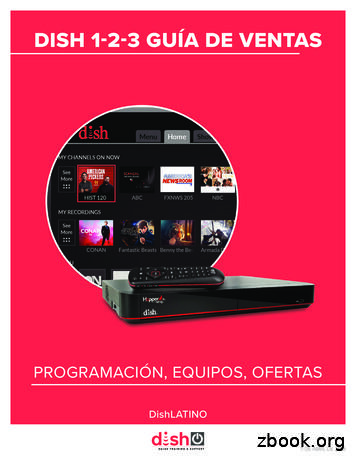MES
EBOOKMESTHE COST & THE BENEFIT
Considering a ManufacturingExecution System?For the last two decades, Manufacturing Execution System (MES) has been a hot topic at nearlyevery automation conference and for good reason. MES is a powerful tool that can deliver processefficiencies, yield improvements, cost avoidances, right first time, and much more. For a numberof organizations, the process for choosing an MES begins with contacting their current automationsupplier. Alternately, the process may begin with attendance at a trade show or conference thatpresents case studies promoting a particular product or solution. When supplier or product familiaritybecome the driving force behind product selection, very little analysis goes into the requirements orthe business case prior to making the procurement decision. Generally speaking, the organization has“hot buttons” and makes these the focus of their search. Such an approach can be a costly mistake.The supplier vehemently asserts that their product directly addresses the client’s concerns. Let’s behonest, in most cases, the supplier doesn’t identify which features are fully supported, those whichwill require extensive configuration, or those that will require customization. And when customizationis necessary, the supplier’s estimate is sure to be optimistic. Furthermore, if the system will be usedin a regulated industry, the effort required to validate the customizations is sure to be underestimatedas well. There is likely little discussion of how the customization may complicate lifecycle support andproduct upgrade. Above and beyond the failure to identify the system’s requirements prior to MESselection, a genuine cost/benefit analysis is rarely conducted.These selection considerations notwithstanding, let’s look at the business drivers behind selection.Generally speaking, once the MES conversation takes hold in an organization, it is assumed that thebusiness is going to purchase a new product and integrate it with current process control and informationsystems. However, the first question a business should ask is, “Do we need a comprehensive MESproduct, or will we benefit most from a few select MES features?” Before the conversation goes too far,the business should evaluate the full MES feature set to quantify each feature’s value in terms of return.This evaluation of MES features is particularly important if the MES supplier provides a modular productthat has a licensing model based upon its modularity; the user can eliminate license costs for featuresthat won’t provide a benefit, offsetting the license cost and thus reduce the Total Cost of Ownership(TCO). Out of the myriad of MES features, it has been our experience that the most commonlyimplemented and beneficial MES features are Automated Process Orders, Electronic Production Records,Weigh and Dispense, Track and Trace, and Electronic Logging. Of the remaining MES features, manybusinesses will have implemented these features in their Enterprise Resource Planning (ERP) systemor other information management systems. Such features commonly implemented in the ERP includeManufacturing Scheduling, Product Definition, Master Recipe Management, and Resource Managementto name a few.Although these features are considered to reside in the MES feature domain, they are typically alreadyaccounted for in the business’s process model and have been implemented in other informationmanagement systems. If there are a small number of MES features that will deliver a significant value,like the features mentioned above, a full business case should be developed to determine the bestcourse for implementation.MESTHE COST & THE BENEFIT2
Before laying out the complete business case, let’s look at an approach that may not have been givensufficient consideration. If a few MES features will deliver the majority of the value of the MES, do youalready have a platform in place that could deliver these features and their subsequent value? Do youactually need to purchase a new product? For many organizations, the answer to the former questionis yes, you already have a platform that can deliver the key functions. Most of the customers we workwith have process data historians. In fact, in regulated industries, most of our customers have one oftwo products. These two industry-leading products have the necessary components to deliver a numberof MES functions. These two primary solutions provide continuous data historians, contextualized datahistorians, manual data entry tools, reporting and visualization tools, and software development kits.These solutions can be configured to support a number of MES features, usually at a significantly lowercost than a traditional MES solution. This is particularly true when it comes to electronic batch reporting.With little effort, both of these data historian products can be configured to use the process contextcaptured from the process control system (PCS) to aggregate instrument values. These aggregatedvalues can then be stored as batch parameters in the contextualized data historian.Let’s take a look at a simple example. Let’s say we have a Steam In Place (SIP) phase in our unitprocedure. During the SIP phase, the PCS monitors a number of temperature instruments to ensurethat a minimum temperature is held for a designated period of time to obtain a required lethality. Inthis case, the SIP phase start and end times, the context for the phase, are being acquired and storedin the continuous data historian. Likewise, the instrument values are being acquired and stored in thecontinuous data historian. Tools associated with the contextualized data historian can be configured toaggregate the instrument values over the context of the phase to calculate the minimum temperaturevalue held during the SIP phase. This aggregated value can be stored in the data historian whereadditional context information such as batch ID, unit, operator, etc. can be applied. The data historiancan be configured to store all the critical process parameters for a batch in a product, process, batchhierarchy. These stored critical process parameters provide the basis for an electronic batch record.MESTHE COST & THE BENEFIT3
Once the critical process parameters are stored in context, we have the ability to perform analysis acrossbatches and to provide the real basis for Manufacturing Intelligence—the transformation of process datainto process information and process information into process knowledge.Furthermore, when all the process parameters are stored in a batch context, additional informationcan be readily integrated into the hierarchy. For example, assay values from a Laboratory InformationManagement System (LIMS) can be integrated into the batch hierarchy to provide yield calculations forthe batch. Calibration and maintenance information can be integrated into the hierarchy to determine theimpact of calibration and maintenance on yield and quality. As another example, process context from thePCS can be integrated with Building Management System (BMS) data to indicate when a cleanroom is inuse. BMS data for differential pressure and flow rates can be integrated into the hierarchy to demonstratethat the room was within specifications during cleanroom activities. If automated environmentalmonitoring (EM) equipment is available, likewise, this data can be integrated into the cleanroom hierarchyas well to demonstrate that the room was in specification. No longer is it necessary to sift through BMSor EM data to conduct out-of-specification investigations. A third example achievable with modest effortis automated process orders, referring to the consumption of raw materials and posting of yields from/to a materials management system. To determine product consumptions, product addition context fromthe PCS can be used to calculate deltas of weigh cells or level indicators. These product additions can bestored in the process hierarchy and at the end of the unit operation, phase, or batch, can be applied to thematerials management system transactionally. Such a solution can eliminate the need to perform shopfloor keying of consumptions and yields by operators in an ERP system thus reducing the number ofdefects produced by keying errors and improving the process efficiency by eliminating process steps. Asstated above, many clients already have the tools in place to deliver these types of solutions at a fractionof the cost of a full MES implementation.MESTHE COST & THE BENEFIT4
Finally, here are some things to think about when developing the MES business case. If a large MESproject costs in the neighborhood of 5M - 10M (excluding the costs of the PCS and data collectioninfrastructure), in terms of process efficiencies, cost avoidances and yield improvements, what is thepayback period on that 5M - 10M investment? My guess is that most of the implementation teamwill be retired long before that period is reached. Consider also the “do nothing” case. What will be thetotal loss and risk if the business continues to operate as-is over the same period? When considering thecase of a comprehensive MES solution, evaluate the MES features that will yield the greatest return oninvestment. These features are likely the ones that will significantly reduce cycle time or eliminate errorsand reprocessing. Returning to the theme of this paper, consider also the case of implementing thesehigh-return features utilizing a contextualized data historian and its associated tools. This last case mayrequire some thinking outside of the box, but there are huge savings and rewards available to those whoare willing to consider it.MESTHE COST & THE BENEFIT5
THE COST & THE BENEFIT 4 Once the critical process parameters are stored in context, we have the ability to perform analysis across batches and to provide the real basis for Manufacturing Intelligence—the transformation of process data into process information and process information into process knowledge.
TVs DishLATINO Clásico DishLATINO Plus DishLATINO Dos DishLATINO Max 1 29.99/mes 52.99 Precio regular 34.99/mes 59.99 Precio regular 52.99/mes 77.99 Precio regular 67.99/mes 89.99 Precio regular 2 34.99/mes 59.99 Precio regular 39.99/mes 66.99 Precio regular 57.99/m
organization Vision, Mission, and supporting Goals, Agency executives identified the need for a strong MES Vision and strategy to guide its system investments by setting an aspirational vision for the MES's end state. 2.1 THE AGENCY'S VISION, MISSION, AND GOALS Agency Executives developed the MES Vision by tying the MES strategy to the overall
Notions de base des syst mes r partis Probl mes de la construction d !applications r parties Mod les d!organisation d!applications r parties Patrons et canevas de base pour le mod le client-serveur Syst mes asynchrones, coordination, programmation par v nements Exemples de syst mes asynchrones Syst ms coposant.ntergicels coposants.
Avec mes sentiments de gratitudes les plus profonds, je dédie ce travail : À ma source de tendresse, d’espoir et de force, mes chers parents « Nadir et Mouna », qui m’ont toujours souhaité la réussite et le succès. À mes chers frères Bilel, Fares et Saif El Dinne et à mes chères sœurs Kai
1st Year Credits Compulsory Courses: MES-051 : Education : Philosophical and Sociological Perspectives 6 Credits MES-052 : Psychology of Learning and Teaching 6 Credits MES-053 : Educational Management, Planning and Finance 6 Credits MES-054 : Methodology of Educational Research 6 Credits Optional : Any one
of cases currently, the MES does not directly control a machine but rather tracks the work-in-progress on the shop floor. MES is a subset of enterprise resource planning (ERP) systems and executes the plan determined by the manufacturing resource planning (MRP) system. The functions of MES programs include: compiling a bill
address your specific challenges while building toward an eventual full-scale MES deployment. These applications can start with a single use case at the machine or work-area level, and then scale up to a larger MES solution over time as ROI is realized. MES applications include the following: Production-management applications
the SAP MES and a Robotnik 'RB-10robot. The scheduler interface provides real-time information about the current status of the MES, AIV, and the current stage of scheduler processing. . on the integration of an MES and AIV (as shown in Figure2), which is necessary to build a fully connected, automated smart manufacturing environment. The .























